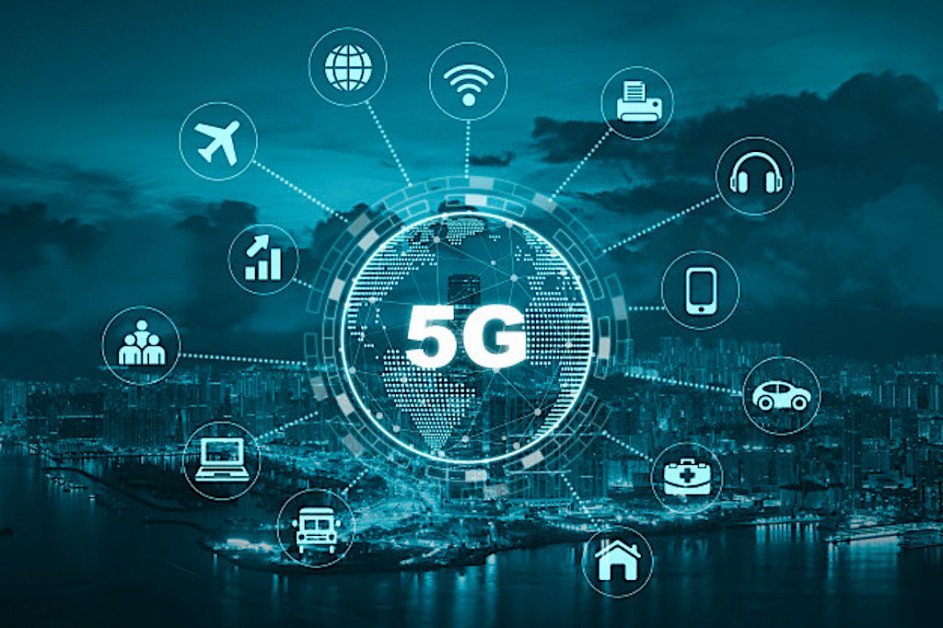Thought Leaders
Powering the Distant Future: 5G and Machine Learning at the Edge

Edge computing has been something of a buzzword for some time, a gradual network trend that shows no sign of slowing down. Several recent developments – including the increasingly widespread deployment of 5G networks – have come together to cement edge computing into the enterprise technology roadmap, as well as drive a whole new galaxy of use cases.
From smart cities to Industry 4.0
Of course, there is considerable interest in edge computing from some of the biggest manufacturers and retailers on the planet. From Amazon to Cisco, Google to Intel, via maybe Microsoft and NVIDIA, there are proven products in the market and in many cases highly-focussed product ranges that target edge in particular. This is itself something of a shift from just a few years ago, where Edge deployments tended to utilise standard network infrastructure and hardware. A recent report from ResearchAndMarkets.com estimates that Edge Computing Infrastructure Revenues will reach $17.9 billion by 2025 with an additional $1 billion in optical modules and networking to support improved transport of data.
Edge networks are often associated with a very broad range of applications, from smart cities, fully-automated vehicles, and a variety of AI and ML applications, themselves an entire niche each. The reason for this range is that Edge networks target two key aspects that are vital for these, being low-latency and reliability. By processing data at the edge of the network, usable insights can be gained immediately, rather than delayed significantly by the more traditional combination of network latency, cloud processing, analysis and finally action. This is particularly important for Industry 4.0 applications, as well as smart city and self-driving cars – delayed responses due to latency could have downright dangerous implications in the latter cases, and significant cost increases at the other.
Latency: Enemy number one
That race to minimise latency plays very well with the development of future communications networks, most notably 5G – although the race to develop viable LEO-based satellite connectivity may also result in low-latency connectivity too. The potential of 5G technologies such as beamforming and massive MIMO technology to enable practical application of edge networking is significant.
The result is a flurry of high-level deals and partnerships to develop 5G and edge cloud solutions for the whole value chain. One recent example being Google Cloud and Ericsson, which have partnered to develop new solutions at Ericsson’s Silicon Valley D-15 Labs, including piloting enterprise applications at the edge on a live network with Italian telco TIM. That project aims to automate the functions of TIM’s core 5G network, cloud-based applications and Google Cloud solutions, targeting automotive, transportation and manufacturing sectors, according to the companies.
Also primarily targeting transportation and manufacturing sectors, Verizon’s private on-premise mobile edge compute (MEC) service with Microsoft Azure has recently ramped up. The managed services offering follows the integration of Verizon’s private 5G offering earlier this year with Amazon Web Services (AWS), as Verizon positions itself firmly as connectivity and IoT framework provider, allowing enterprises to select their preferred cloud provider.
Towards NFV: 5G adds additional value
This jostling for position is an indicator of the scale of the market – indeed, a Gartner research report from 2018 predicted that the proportion of enterprise-generated data processed outside centralised data centers or clouds will rise from 10% in 2018 to 75% by 2025. As Gartner highlights in the report, 5G connectivity is set to be a key enabler of edge computing, not least due to the requirements of AI and ML at the edge. Technologies baked into 5G SA networks, such as network slicing, which allows vital applications to have dedicated capacity, will prove essential to the success of AI/ML in a wider Industry 4.0 context.
Another fundamental shift in this edge market may well prove to be the development of Network Function Virtualisation (NFV), which enables enterprises to configure and reconfigure standard hardware on the fly to meet specific hardware requirements. Although industry-wide standards are a key stumbling block, there are several initiatives that are seeking to break through and establish wider consensus around such cloud-native networks. In particular, the ETSI NFV industry specification group defined a roadmap back in November 2020 that sets out how containerised virtual network functions (VNFs) could – and likely will – be managed in an NFV framework.
Edge: Powering the future of computing
The applications enabled by edge AI and ML, cemented by 5G connectivity and potentially shored up by emerging NFV frameworks are compelling indeed. For example, the rising use of autonomous guided vehicles (AGVs) and automated mobile robots (AMRs) in factories and warehouses – particularly in the fulfillment end of the supply chain – are driving uptake of computer vision and ML in edge deployments. The low latency and immediate processing of the sensor and video data is crucial to ensuring safety margins are met, as well as driving operational optimisations and efficiencies.
While 5G SA is still very much in the rollout stage – apart from numerous private networks that have taken the plunge – the fact remains that the large industry players are betting big on 5G, and edge computing and networking as a key market driver. The ability for any enterprise to process transactions and store data near to the actual source of that data will rapidly become a key bellwether for Industry 4.0 success, triggering a series of downstream benefits such as predictive maintenance, NFV and real-world automation.












